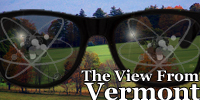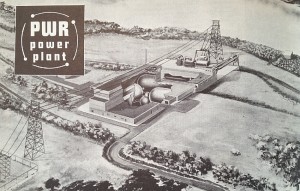Carnival of Nuclear Energy 195
 The 195th Carnival of Nuclear Energy is posted today at Atomic Power Review. You can click here to access this latest entry in a long-running tradition among the top pro-nuclear bloggers and authors.
The 195th Carnival of Nuclear Energy is posted today at Atomic Power Review. You can click here to access this latest entry in a long-running tradition among the top pro-nuclear bloggers and authors.
The ANS Nuclear Cafe is a blog owned and edited by the American Nuclear Society. Information contained on the ANS Nuclear Cafe has been provided by numerous sources. Therefore, the American Nuclear Society assumes no responsibility or liability for the accuracy of information contained herein. DISCLAIMER: The views expressed in posted articles do not necessarily reflect the views of the American Nuclear Society. The views expressed here are those of the individual authors. ANS takes no ownership of their views. The American Nuclear Society assumes no responsibility or liability for any use or operation of any methods, products, instructions, or ideas contained on this site.

A message from Electrical Builders, Ind.
America’s Top Performing Nuclear Plants Rely on Electrical Builders, Industries to Expand and Extend the Life of Their Critical Electrical Assets
 The 195th Carnival of Nuclear Energy is posted today at Atomic Power Review. You can click here to access this latest entry in a long-running tradition among the top pro-nuclear bloggers and authors.
The 195th Carnival of Nuclear Energy is posted today at Atomic Power Review. You can click here to access this latest entry in a long-running tradition among the top pro-nuclear bloggers and authors.
In honor of the Seattle Seahawks' convincing victory in the Super Bowl just a few short days ago, today's Nuclear Matinee videos come straight from the great state of Washington, home to Energy Northwest's 1,170-megawatt Columbia Generating Station-which, incidentally, produces enough electricity to power a city the size of Seattle.
Over the past four years, the South Korean nuclear power program has suffered a set of very public setbacks that cast doubt on the entire program's integrity, to the point where even the South Korean president's attention was directed at the enterprise, in addition to public support being damaged. A recent well-publicized realignment in energy policy has seen a reduction in the expected percentage that nuclear energy would contribute to South Korea's fuel mix, and in some quarters it was augured that the program had been crippled.
 The 194th Carnival of Nuclear Energy has been posted at Next Big Future. You can click here to see the latest installment of a long-running tradition among the top English language pro-nuclear bloggers and writers.
The 194th Carnival of Nuclear Energy has been posted at Next Big Future. You can click here to see the latest installment of a long-running tradition among the top English language pro-nuclear bloggers and writers.
In today's Nuclear Matinee, take a trip inside a nuclear reactor core with Jem Stansfield and the BBC. Jem explores a never-used reactor core at the Zwentendorf nuclear power plant in Austria to explain, in the most straightforward of terms, how a nuclear power station works.
On Saturday, January 25, 2014, members of the American Nuclear Society's Chicago Section organized and participated in "Atomic Fission Fun," an event for Girl Scouts to learn about nuclear science. Sixty middle school students from the Girl Scouts of Greater Chicago and Northwest Indiana traveled to the Illinois Institute of Technology campus in Wheaton, Ill., to participate.
Since the natural gas price collapse that started in summer 2008, many observers have become accustomed to using the adjective "cheap" when talking about natural gas. Like the word "clean," another adjective often applied to methane, "cheap" is a relative term. It is also a term whose applicability depends on time and location. As I wrote in a recent post on Atomic Insights, gas is only really cheap if nobody needs it. When demand increases due to some kind of perfectly natural phenomenon-like a winter with near normal temperatures-demand can exceed deliverability by a large margin.
 The 193rd Carnival of Nuclear Energy has been posted at The Hiroshima Syndrome. You can click here to see this latest installment of a long-running tradition among the top English language pro-nuclear bloggers and writers.
The 193rd Carnival of Nuclear Energy has been posted at The Hiroshima Syndrome. You can click here to see this latest installment of a long-running tradition among the top English language pro-nuclear bloggers and writers.
A nuclear power station contributes a lot more in benefits to a community and region than just massive amounts of 24/7 electricity generation-although it should be noted that, in the case of Seabrook Station alone, 42 percent of New Hampshire's entire electricity generation comes from this single power plant. Amazing. See this excellent post at NEI Nuclear Notes for more on Seabrook's "bigger picture," and this story for more on regional economic benefits in particular.
[Suzy is at it again, this time touring nuclear sites all over North America. Make sure to check out her latest adventures at the Nuclear Literacy Project]
 The Art of the Deal is the title of a book by Donald Trump, and it certainly applies to a recent press conference in Vermont. The press conference, on December 23, 2013, was about the eventual closing down of the Vermont Yankee power plant and was a big deal, a game changer, and a just-in-time Christmas present for many.
The Art of the Deal is the title of a book by Donald Trump, and it certainly applies to a recent press conference in Vermont. The press conference, on December 23, 2013, was about the eventual closing down of the Vermont Yankee power plant and was a big deal, a game changer, and a just-in-time Christmas present for many.
 It's time for the 192nd Carnival of Nuclear Energy, in which the world's top pro-nuclear bloggers and authors entertain and inform us with their best posts and stories.
It's time for the 192nd Carnival of Nuclear Energy, in which the world's top pro-nuclear bloggers and authors entertain and inform us with their best posts and stories.
Ha! Words don't do justice - just click 'play,' faithful Matinee viewers, and enjoy.
The commercial nuclear power industry has a remarkable safety record despite lingering images from the accidents at Three Mile Island and Fukushima Daiichi. This record is the legacy of a community of nuclear power plant designers, operators, and regulators who, though imperfect, were committed to the safety of the commercial nuclear power enterprise.
Interview by Katy Huff
[Richard Rhodes, historian and author of numerous books including the Pulitzer Prize-winning The Making of the Atomic Bomb, was the keynote speaker at a special dinner held in observance of the 75th anniversary of the discovery of nuclear fission at the American Nuclear Society 2013 Winter Meeting. Many ANS members and others, both in attendance and unable to attend, have expressed a desire to see in print his remarkable presentation on the fundamental technological revolutions and advances of the past century, especially the monumental discovery and application of nuclear technology. The speech is printed in its entirety in the January edition of Nuclear News, and below.]
 The 191st Carnival of Nuclear Energy has been posted at Rick Maltese's blog "Deregulate the Atom." You can click here to see this latest installment of a long-running tradition among the top English language pro-nuclear bloggers and writers.
The 191st Carnival of Nuclear Energy has been posted at Rick Maltese's blog "Deregulate the Atom." You can click here to see this latest installment of a long-running tradition among the top English language pro-nuclear bloggers and writers.
Having a few days ago caught up with the latest milestones in construction of new nuclear units at Plant Vogtle in Georgia, let us take a look at the latest history in the making at the construction site of units 2 and 3 of the Virgil C. Summer Nuclear Generating Station in South Carolina - and in the local community surrounding one of the largest construction projects in the state's history. Construction of two new Westinghouse AP1000 reactors officially began in March 2013 and the reactors are planned to be online in 2018.

Westinghouse Electric Corporation promotional illustration showing "PWR" (Shippingport Atomic Power Station) plant and site. "Selected Articles on Nuclear Power," Westinghouse Electric (see sources).
The commercial nuclear power program in the United States was sparked by the Shippingport Atomic Power Station project-but one project does not a program make. Action by the U.S. Congress soon after the announcement of the project ensured that a wide program that would evaluate other approaches was launched: